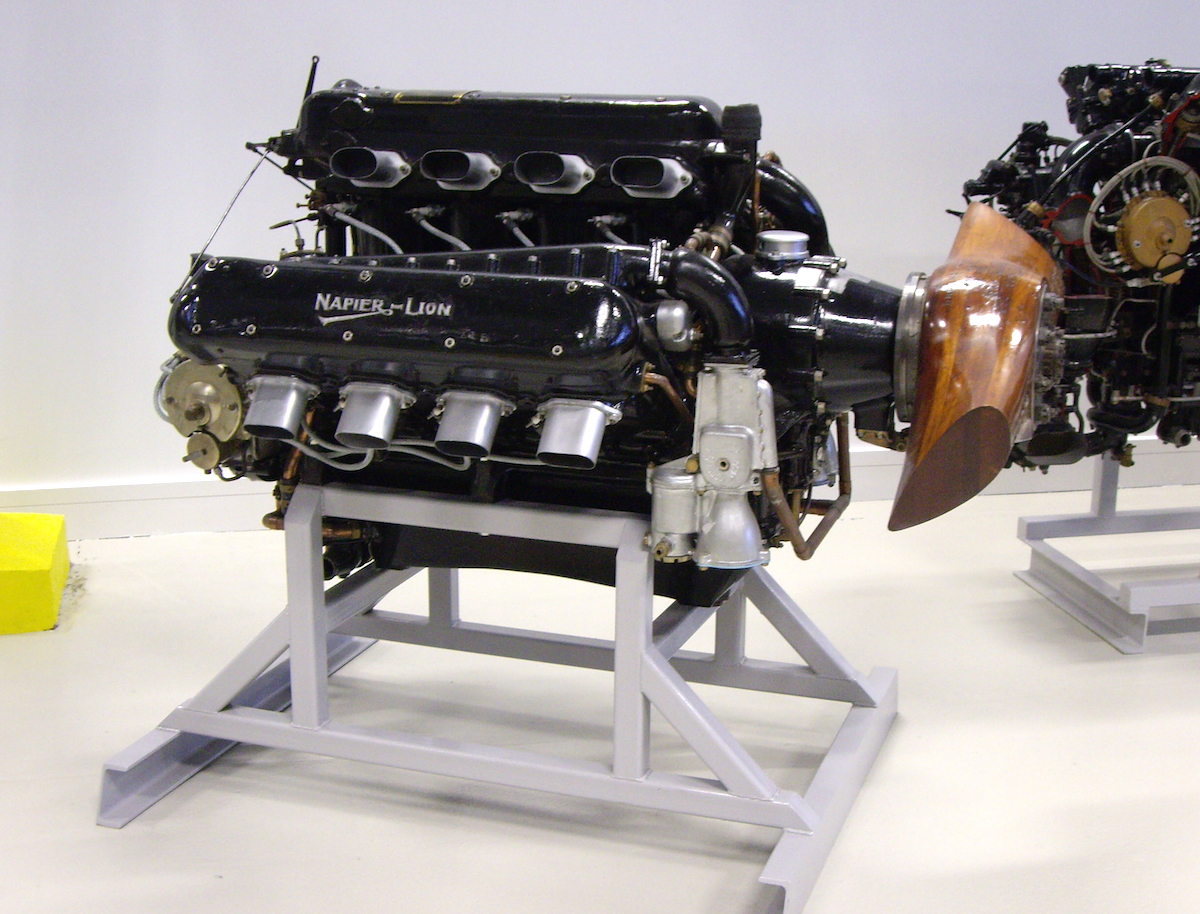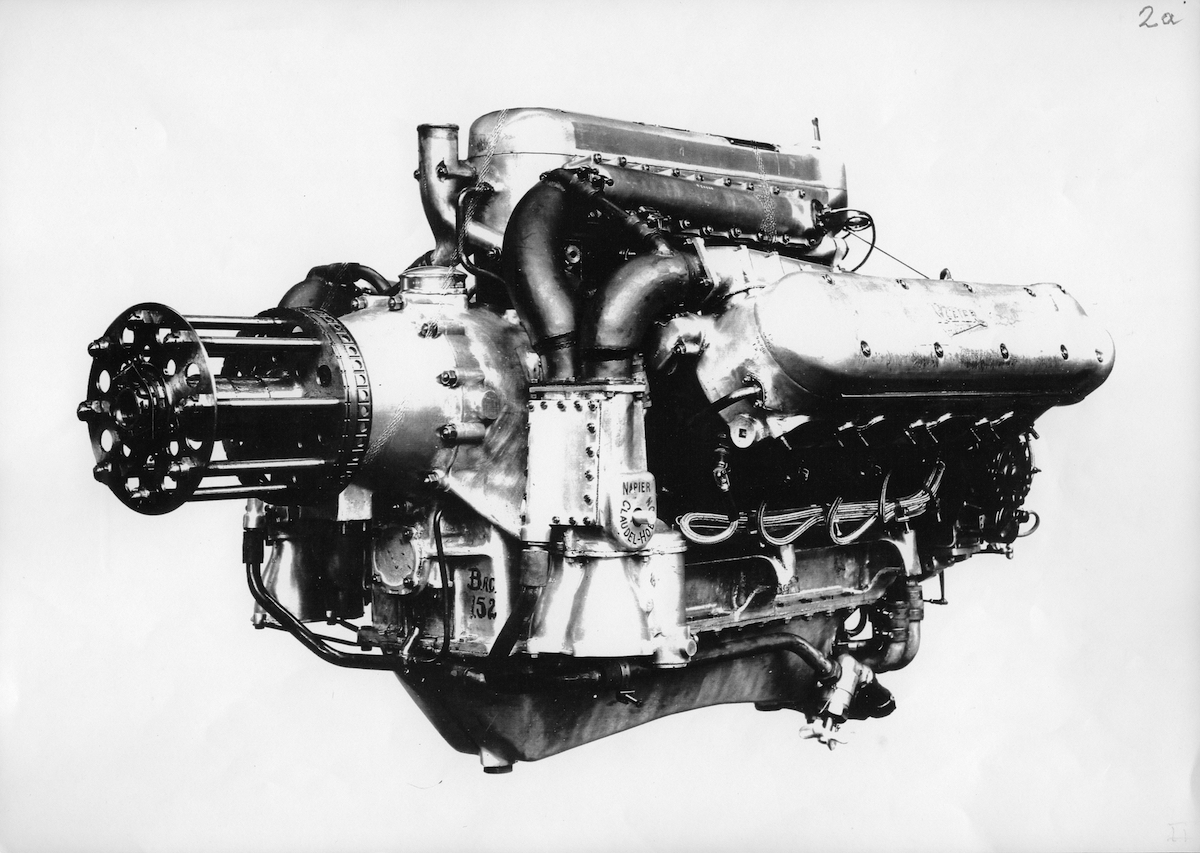Napier Lion
Early in the First World War D. Napier & Son were contracted to build aero engines to other manufacterers’ designs. Initially a Royal Aircraft Factory 3A model and later the Sunbeam Arab engine. Reliability was an issue with these engines and, despite Montague Napier’s attempts to improve them, in 1916 he decided that the Company should design its own aero engine. This was a private venture and incorporated key design criteria having high power, lightweight construction and low frontal area.
Initially called the Triple-Four this advanced 24 litre engine design incorporated 12-cylinders in a “broad arrow” made up of three banks of four cylinders sharing a common crankcase. There were four valves per cylinder with twin overhead camshafts on each bank. The engine had a single block milled from aluminium instead of the more common separate steel cylinder construction used on almost every other design of the time.
Under the guidance of A.J. Rowledge the design, now renamed Lion, was completed and the first hand-built prototypes ran in 1917. The Lion was first fitted into a de Havilland D.H.9 in early 1918 and initially had problems with cooling and the milled block. The engine was redesigned to have separate aluminium cylinders and the new design entered production in June 1918. The Lion I version delivered 450 hp and superseded the Liberty L-12 as the most powerful aero engine. This was further improved when a turbocharged version was produced in 1922.
The Napier Lion was a massive commercial success for D. Napier & Son. It was ubiquitous being fitted in the majority of aircraft in the British Empire. Between the wars it powered over 150 different aircraft civil and miltary aircraft worldwide.
A 500 bhp Napier Lion engine powered a Supermarine Sealion flying boat which won the 1922 Schneider Trophy. Napier developed the Lion to produce 900 bhp for the 1927 Schneider race winner powering the Supermarine S5 seaplane at 281.6 mph. In 1929 the engine was supercharged to produce 1,350 bhp and briefly took the world air-speed record in the lovely Gloster VI “Golden Arrow” floatplane at 336 mph. Highly tuned racing versions of the Lion could reach 1,300 hp and were used to break a whole host of world records including height, air speed and long distance records on land sea and in the air. This included the water speed record of 100 mph in 1933 in Hubert Scott-Paine’s Miss Britain III a record for single engined boats which stood for 50 years. A Napier Lion engine is fitted into the famous Napier Railton racer which holds the lap record for Brooklands in perpetuity. Lions powered many of Sir Malcolm Campbell’s record breakers (incuding over 250 mph in 1932) and John Cobb’s 394 mph Railton Mobil Special in 1947 a record that stood until the 1960’s, well after the Lion engine had passed its prime.
A marine version of the Lion, unsurprisingly named the SeaLion, was fitted in high speed air-sea rescue launches operated by the RAF during WWII. Another use for the Lion were in propeller-driven motor sleighs which were used for high-speed transport and SAR duties on sea ice by the Finnish Air Force and Navy.
Whilst there are no Napier Lion engines flying today they can still be seen fitted in several racing cars and also demonstrated on an engine stand at events around the UK.



